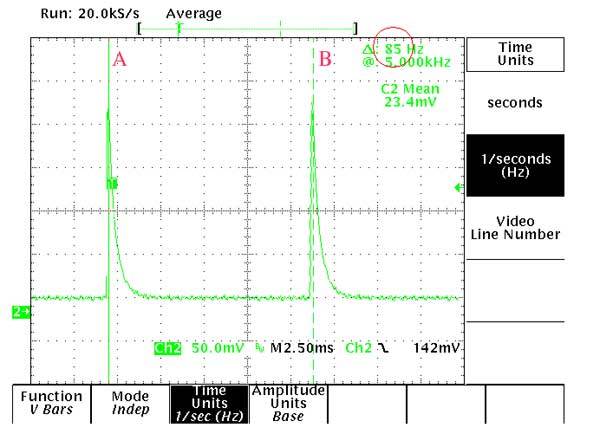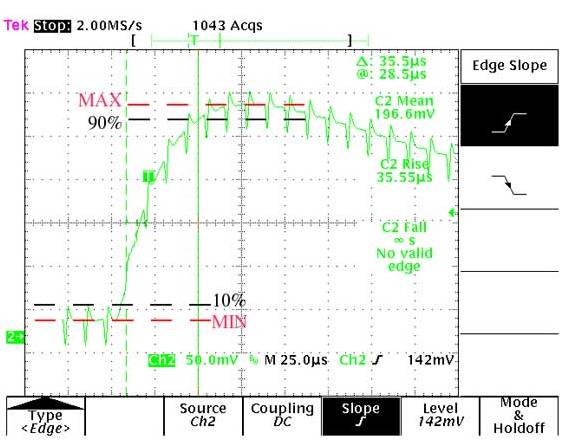The Secret Sauces of THG's LCD Tests
First Observation: Refresh Delay
The two illustrations correspond, in effect, to two successive images (A and B). What normally happens is that a CRT screen flickers, and the image disappears progressively rather than instantaneously per each electron beam scan. And that's what we're seeing here. Simply put, a static image isn't really possible on a CRT.
Second Observation: Display Time
In the absence of any other recognized standards, we'll use a measurement of the time taken to display from 10% to 90% of the desired brightness. As far as I'm concerned, and regardless of what you might think about this "standard", it gives us a valid measurement: the time to display from 10 to 90% is used everywhere for characterizing the performance of electronic components, with success and universal acceptance. In addition, the pixels of a TFT are in always a little ahead of the controlling system, and I have never seen an oscillation or even an overrun of instructions: in contrast, the display time from 10 to 90% seems to be a valid measure.
As an example, here are results we obtained for our CRT:
What we're measuring here is a display time of ... 35 microseconds: that's equivalent to a response time close to 200 times more rapid than commercially-available TFTs! Okay, it's stretching things to talk about a display time for a CRT, since once the beam has passed over the pixel it will start to dim immediately.
However, if you look more carefully at the previous illustration, you can still see successive lighting of the pixels; the distance between two pixels is confirmed by the horizontal scanning of the OSD of the screen.
Get Tom's Hardware's best news and in-depth reviews, straight to your inbox.
Current page: First Observation: Refresh Delay
Prev Page The Driving Software Next Page Third Observation: Fade Time
